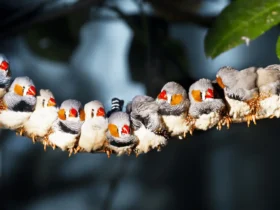The first thing that comes to mind when talking about birds is what? Most of us think of birds as creatures that can take flight and fly. However, not all bird species are capable of flying. Penguins and ostriches are well-known examples of flightless birds, but there are also other species.
The flightless bird species video
In this article, we will introduce to you seven bird species that cannot fly. Please refer to the list of flightless bird species below:
1. Atlantisia Rogersi
Ranking first among the flightless bird species, Atlantisia Rogersi is a chicken-like bird species that inhabits the Tristan da Cunha archipelago and is completely incapable of flying. According to the observations and records made by scientist Henry Martyn Rogers, after whom this species is named:
“The most interesting bird of all the roosters on the island that I have had the fortunate opportunity to know. I believe it is a small bird belonging to the chicken family, without wings, unable to fly, but capable of running at high speeds, taking refuge in dense foliage, and living in burrows. It does not migrate, and its main diet consists of insects and worms. Its habitat range used to extend to Tristan.”
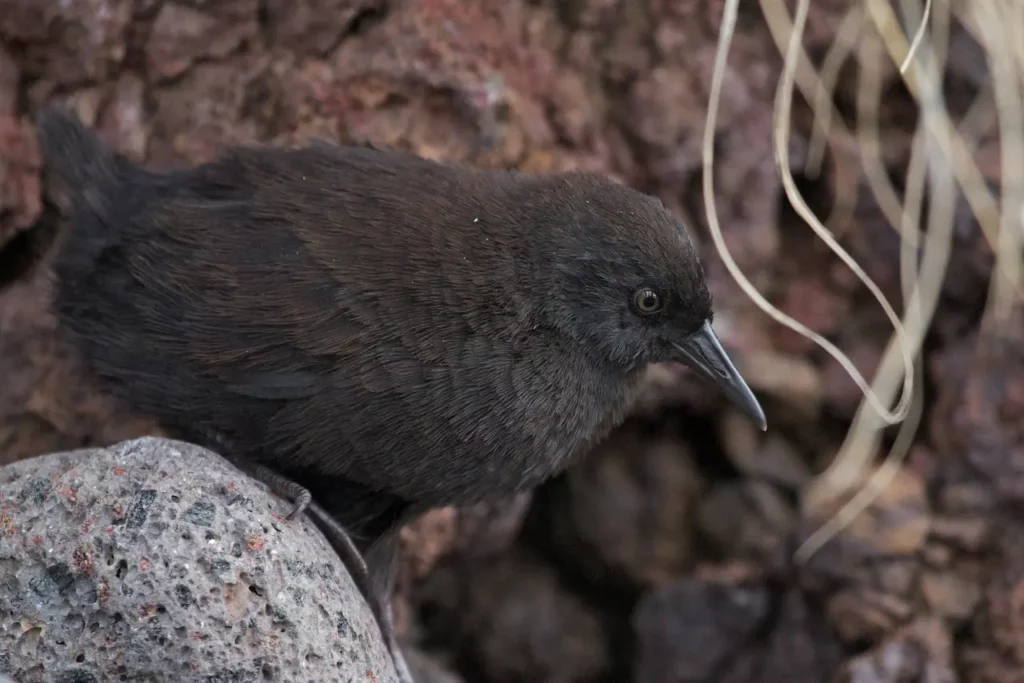
2. Phalacrocorax Harrisi (Flightless Cormorant)
The Flightless Cormorant is a unique species living in the Galapagos Islands, ans found on the Fernandina and Isabela islands. They breed near the coldest water areas and build their nests on rocks or lava formations. The Flightless Cormorant is the largest member of the cormorant family and the only species incapable of flying. It resembles other cormorants except for its wings, which are one-third the size necessary for flight in proportion to its body. The keel on its breastbone, where the large flight muscles would normally attach, is also significantly reduced.
With an estimated population of only about 1,500 individuals, the Flightless Cormorant is one of the rarest bird species in the world. The population of this bird species can vary significantly due to environmental changes such as El Niño events or volcanic eruptions. Females can reproduce up to three times a year, allowing for relatively rapid recovery after environmental disasters. While at sea, they face the risk of shark attacks. On land, they are vulnerable to attacks by hawks, gulls, and introduced predators such as cats and dogs. Fishing nets also pose a threat to these birds, and conservation efforts recommend prohibiting net fishing within their foraging range to protect them.
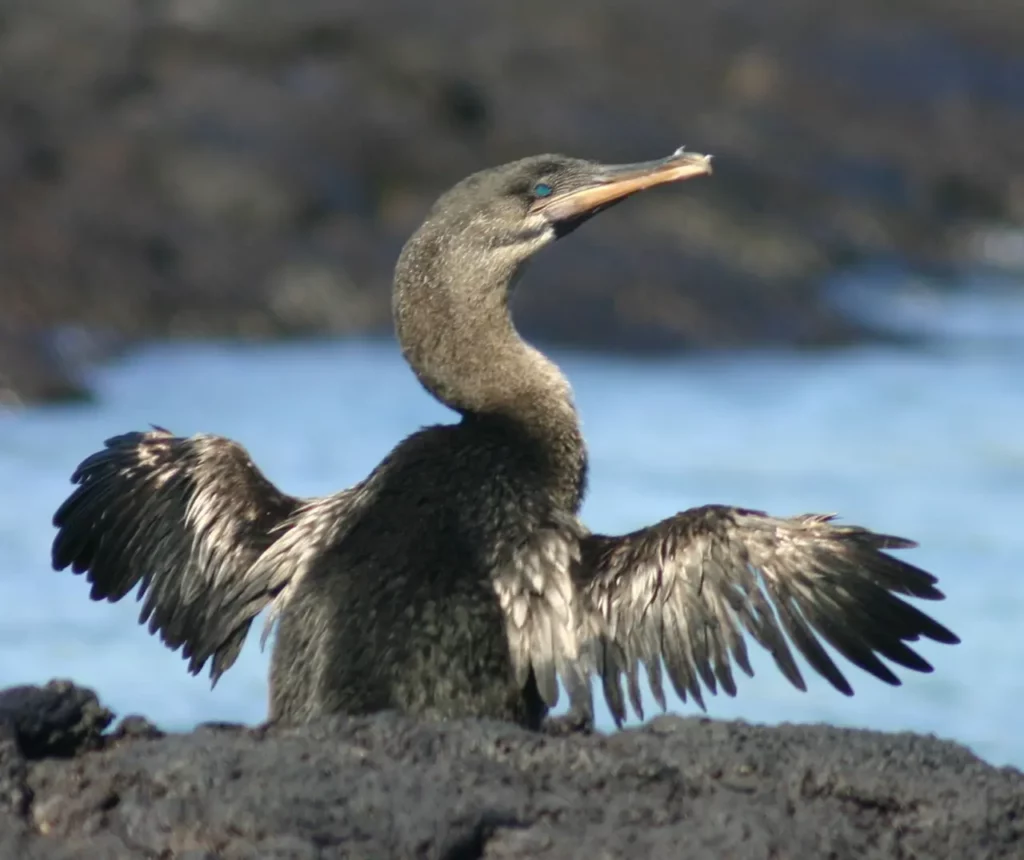
3. Weka
The Weka is a large flightless bird with brown plumage, and it is a characteristic species of the New Zealand region. Currently, four subspecies of Weka are recognized: North Island Weka, Western Weka, Buff Weka, and Stewart Island Weka. In 1835, William Yate, one of the early missionaries in New Zealand, described the North Island Weka as follows:
“A Weka bird, named so due to its large and round breast, about the size of a quail, and distinguished by the deep red coloration of its feathers on the back and under the wings. Its legs are about 5 inches long and relatively slender compared to the body size. It has light brown eyes with a white ring around them.”
These birds are often found near streams and in poor, scrubby areas amidst tussock grass. They are also notorious for stealing crops, food, and small objects.
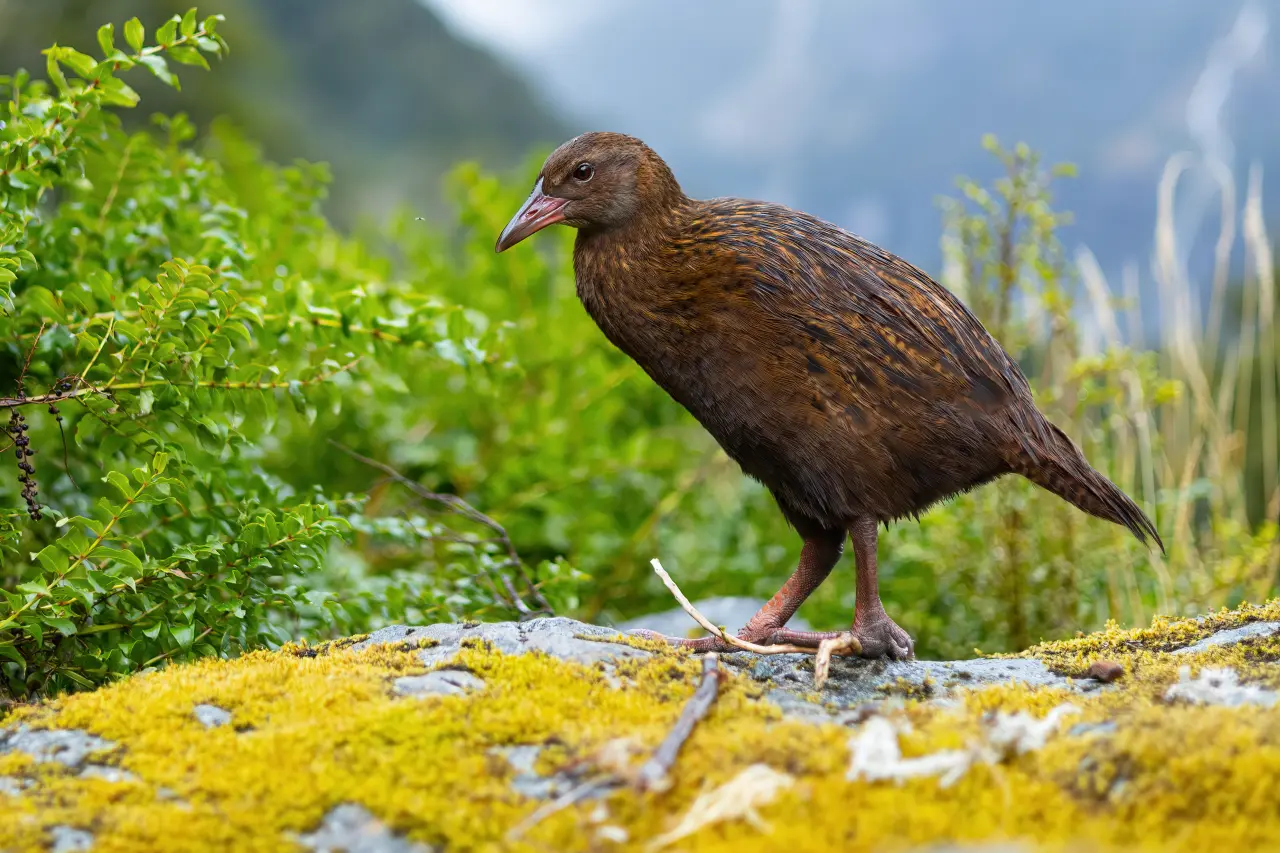
4. Kakapo
Another endemic bird species of New Zealand, the Kakapo, also known as the owl parrot, is a large, flightless, nocturnal, ground-dwelling parrot. They measure between 23 to 25 inches in length and weigh between 2 to 9 pounds. Despite being flightless, Kakapos are excellent climbers. Sometimes, they also use their wings to glide short distances after jumping from a high point. They have yellow-green plumage, large beaks, and feet.
Due to hunting, deforestation, and predation by invasive mammal species, Kakapos are one of the rarest animals on Earth. Currently, there are only around 200 individuals left in the wild, all of which are located within isolated conservation reserves on predator-free islands.
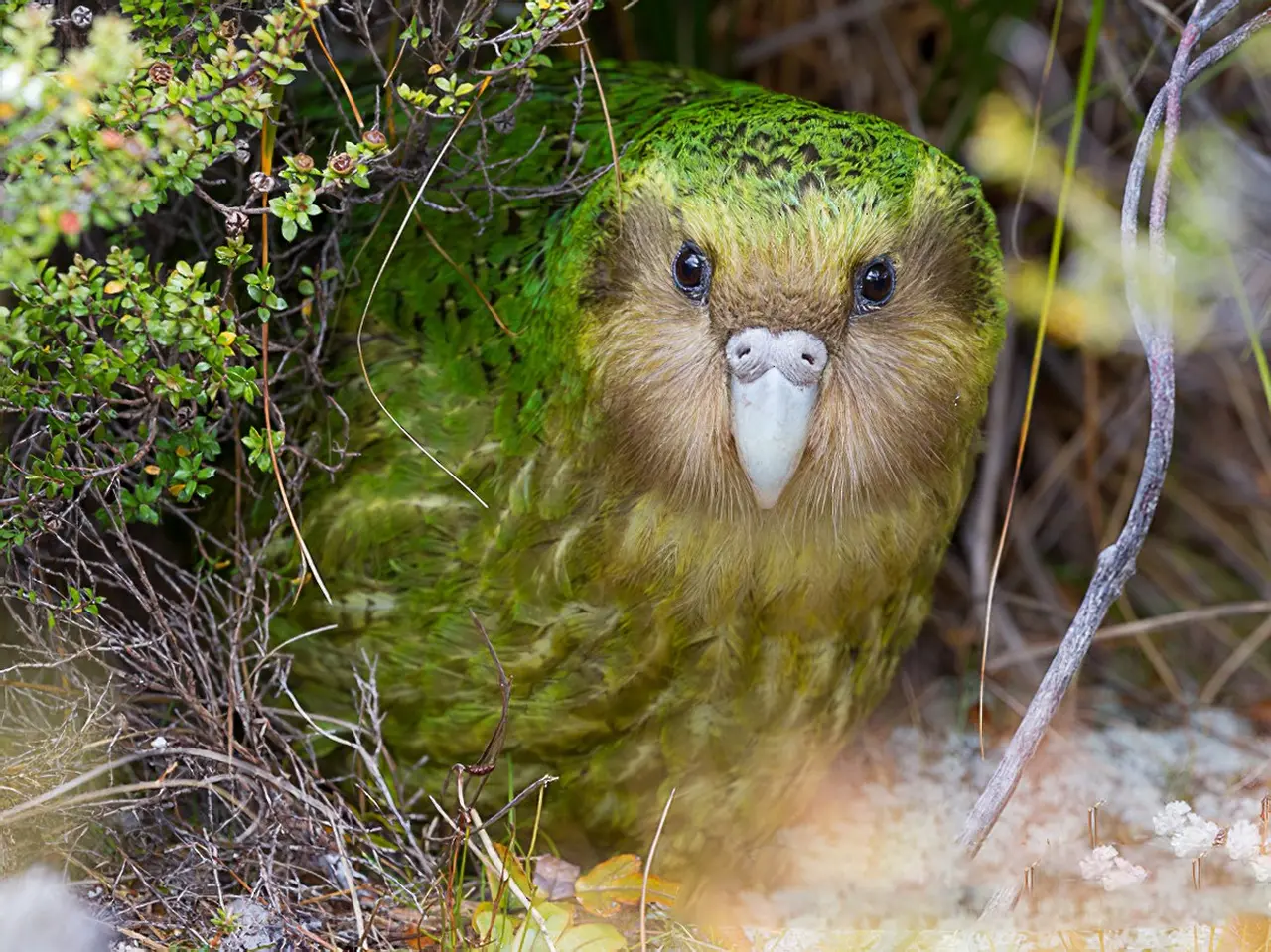
5. Emu
The Emu is a flightless bird that lays eggs. Despite being unable to fly, the Emu is the fastest running bird and one of the fastest running bipeds, capable of sprinting at speeds over 70 km/h (43 mph) with strides up to 5 meters long. Emus are the largest members of the ratite group in the Palaeognathae subclass and are the largest living bird species in the world. Due to their massive size and small, weak wings, they are completely flightless.
However, they still use their wings for balance while running and to display courtship behavior. Wild Emus are found in Australia. Additionally, they are also farmed for commercial purposes. Emus typically weigh between 139 to 320 pounds and can reach a height of up to 9 feet, 2 inches. Their feathers are predominantly black, although they have white tail feathers. They can run up to 43.5 miles per hour, making them the fastest running bird on land. Furthermore, they lay the largest eggs of any land animal.
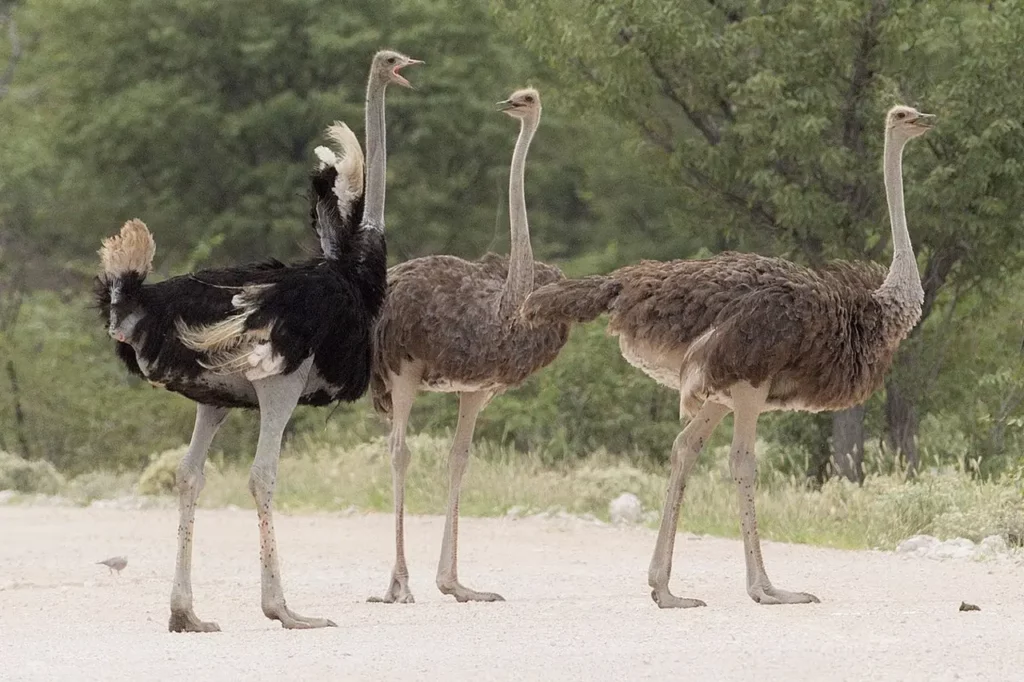
6. Emperor Penguin
The Emperor Penguin is one of the most easily recognizable flightless bird species in the world. They are capable of swimming underwater and live both on land and in the water. They undertake one of the most unique migrations in the world, walking nearly 100 miles over land to breed during the winter. The male and female take turns incubating a single egg and caring for the chicks until they can fend for themselves.
Among the penguin species, the Emperor Penguin is the largest, standing up to 39 inches tall and weighing between 49 to 99 pounds. Their feathers are black on the face and back, white on the belly, and they have a yellow coloration around their neck. They can hold their breath for up to 20 minutes and dive to depths of 1,755 feet. While diving, they hunt for food including crustaceans, squid, fish, and krill.
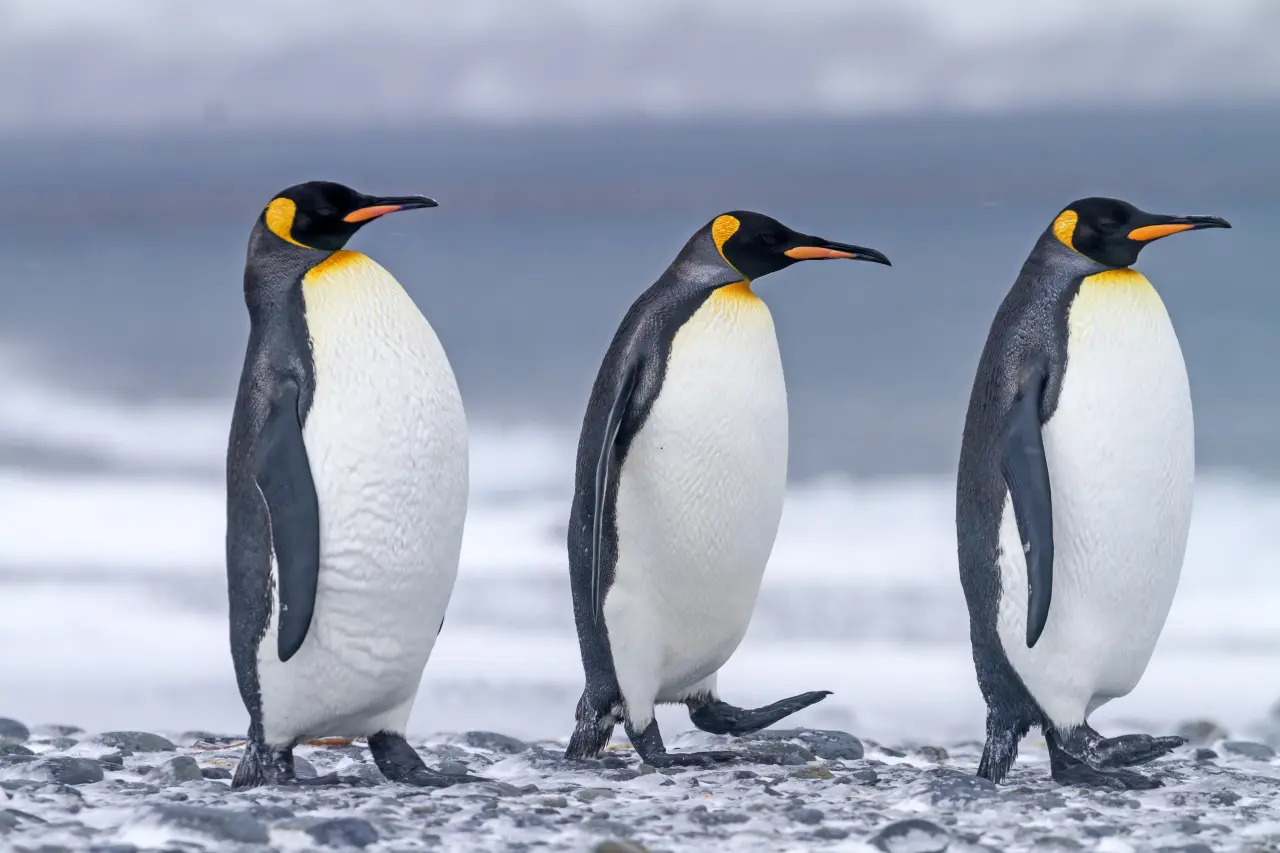
7. Steamer Duck
Steamer Ducks are named after their habit of flapping their wings and feet while in the water. This behavior can make them look like a steamboat with paddles to a casual observer. However, despite their ability to flap their wings, they are still classified as flightless birds. All four species of Steamer Ducks are found in the southernmost regions of Chile and Argentina in South America.
Known for their large size, these duck-like birds can often exceed 33 inches in length and weigh over 15 pounds. They inhabit rocky coastal areas and primarily feed on mollusks, crustaceans, seeds, small fish, and insects. Steamer Ducks can exhibit aggressive behavior and frequently engage in skirmishes with other ducks. Additionally, they will defend against larger waterfowl and other predatory birds and may come to the rescue of other species.
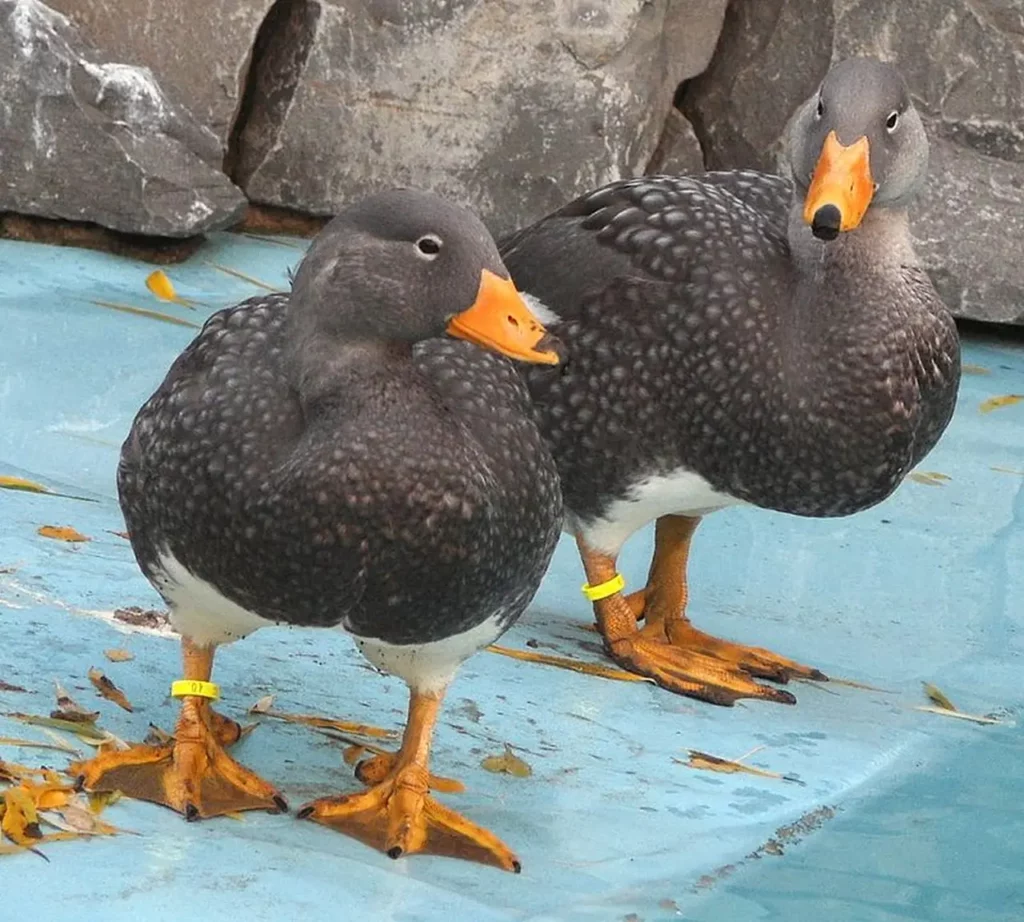
This concludes the list of flightless birds in the world. There is still much fascinating information to discover about birds in particular and the natural world in general. Please stay tuned for more informative updates.
